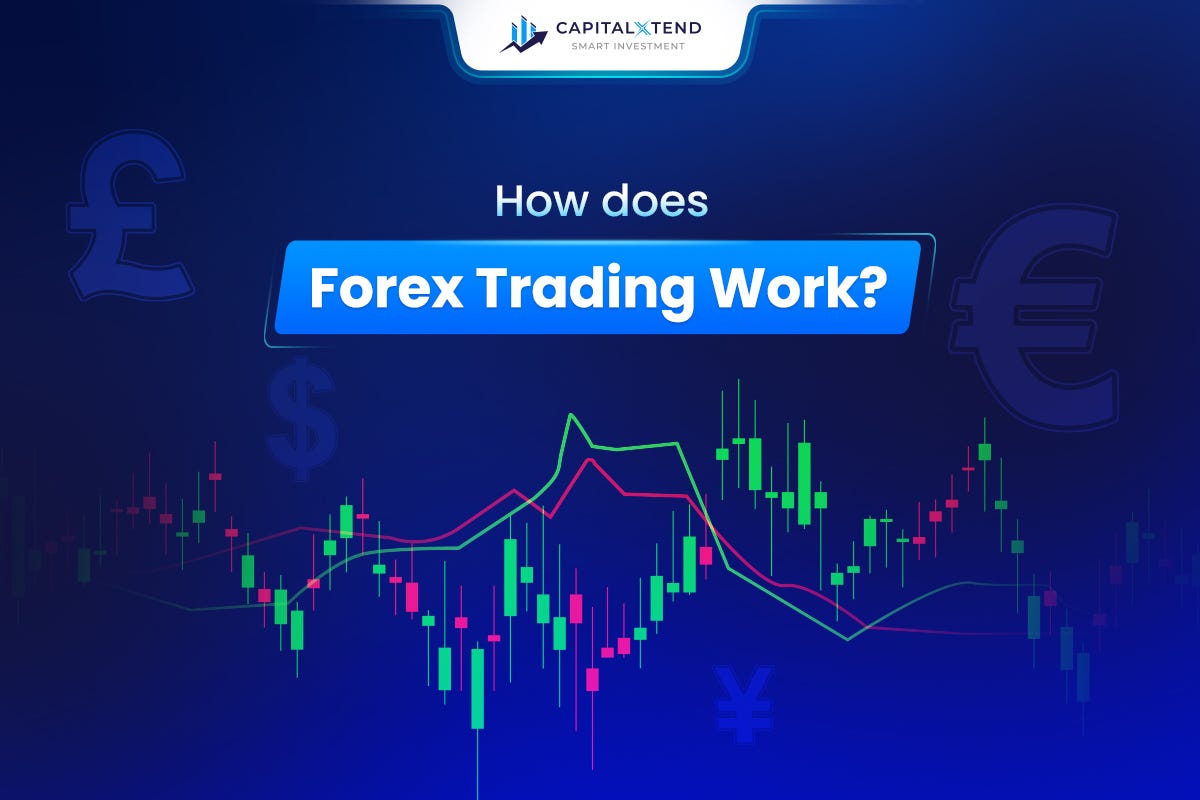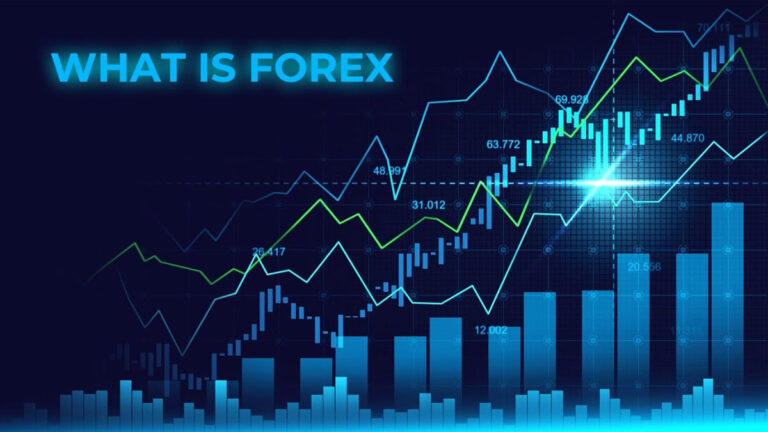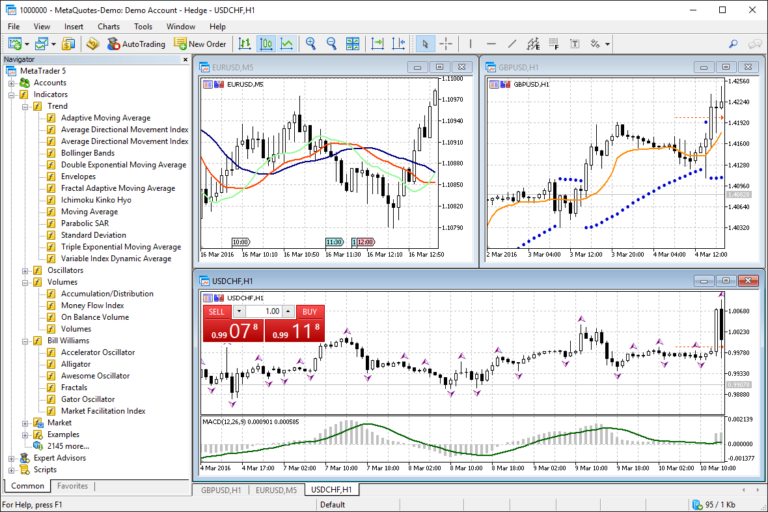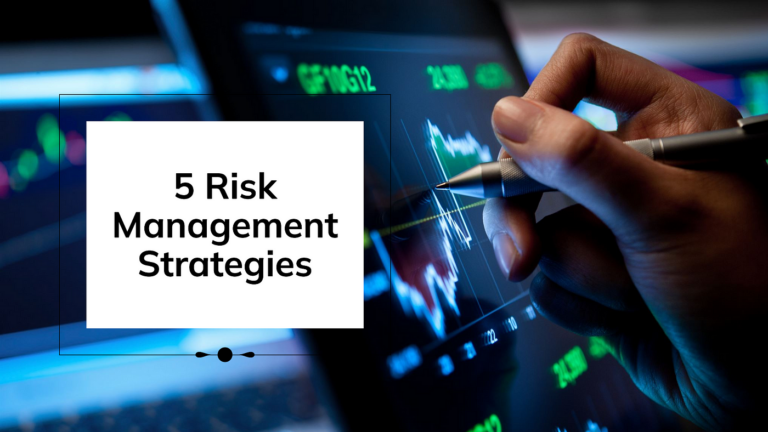
The foreign exchange market, commonly known as forex or FX, is the largest and most liquid financial market in the world, with a daily trading volume exceeding $6 trillion. In the forex market, currencies are traded in pairs, meaning that when you buy one currency, you are simultaneously selling another. The purpose of forex trading is to speculate on the changing values of currencies and profit from price fluctuations. Unlike other financial markets, forex operates 24 hours a day, 5 days a week, due to its global nature.
This article will explain the key features of the forex market, how it works, the players involved, and why it offers opportunities for traders around the world.
Table of Contents:
- What is Forex Trading?
- How Currency Pairs Work
- Who Participates in the Forex Market?
- Understanding the Role of Liquidity Providers
- How to Trade Forex: Buy and Sell Orders
- Market Hours and the Global Nature of Forex
- How Forex Prices are Determined
- Types of Forex Markets: Spot, Forward, and Futures
- Role of Leverage in Forex Trading
- Risk Management in Forex
- Common Strategies Used in Forex Trading
- Why the Forex Market is Unique
- Conclusion
1. What is Forex Trading?
Forex trading involves the exchange of one currency for another in order to profit from fluctuations in exchange rates. For instance, a trader might buy the EUR/USD currency pair if they expect the euro to appreciate against the U.S. dollar. If the euro strengthens relative to the dollar, the value of the currency pair increases, and the trader can sell it for a profit.
Unlike stock markets, which operate from centralized exchanges, the forex market is decentralized and operates over-the-counter (OTC), meaning trades are conducted electronically through a network of financial institutions, brokers, and individual traders.
2. How Currency Pairs Work
In the forex market, currencies are always quoted in pairs because a trade involves buying one currency and selling another. The first currency in the pair is called the base currency, and the second currency is called the quote currency.
Example:
If you are trading the EUR/USD pair and the price is 1.2000, it means that 1 euro (EUR) is equal to 1.20 U.S. dollars (USD). If the price rises to 1.2050, the euro has strengthened against the dollar, and you could potentially profit if you bought euros at the lower price.
Forex traders speculate on whether the base currency will strengthen or weaken relative to the quote currency, and place buy or sell orders accordingly.
3. Who Participates in the Forex Market?
The forex market attracts a wide range of participants, from large financial institutions to individual retail traders. The key participants include:
a) Central Banks:
Central banks, such as the U.S. Federal Reserve or the European Central Bank, play a crucial role in the forex market by setting interest rates and controlling monetary policy. Their actions directly influence currency valuations.
b) Commercial Banks:
Commercial banks engage in forex trading to facilitate international trade and investment for their clients, as well as for their own profit. They are also the largest liquidity providers in the market.
c) Hedge Funds and Investment Firms:
These firms use forex trading to diversify their portfolios and take advantage of opportunities in currency fluctuations. Some hedge funds focus exclusively on the forex market.
d) Corporations:
Multinational companies use forex to hedge against currency risk when conducting business across borders. For example, an American company may hedge against fluctuations in the euro if they do business in Europe.
e) Retail Traders:
Individual traders, known as retail traders, participate in the forex market through brokers. Advances in technology and the availability of online trading platforms have made it easier for individuals to enter the market.
4. Understanding the Role of Liquidity Providers
Liquidity providers are institutions that facilitate trading by offering to buy and sell currency pairs at any given time, ensuring that there is always a buyer or seller available in the market. The largest liquidity providers in the forex market include major banks like JPMorgan Chase, Citigroup, and HSBC.
The presence of liquidity providers is what makes the forex market extremely liquid, allowing traders to execute large trades without significantly affecting the market price.
5. How to Trade Forex: Buy and Sell Orders
When you trade forex, you place orders to buy or sell a currency pair. There are several types of orders you can use:
a) Market Orders:
A market order is an instruction to buy or sell a currency pair at the current market price. It is executed immediately.
b) Limit Orders:
A limit order allows you to specify the price at which you want to buy or sell. The trade is executed only when the price reaches your specified level.
c) Stop-Loss Orders:
A stop-loss order helps manage risk by automatically closing a trade when the price moves against you to a certain level. This minimizes potential losses.
d) Take-Profit Orders:
A take-profit order automatically closes a trade when the price reaches a predetermined profit level, locking in your gains.
6. Market Hours and the Global Nature of Forex
The forex market operates 24 hours a day, five days a week, due to the global nature of currency trading. It is divided into four major trading sessions:
- Sydney Session (Asia-Pacific)
- Tokyo Session (Asia)
- London Session (Europe)
- New York Session (North America)
The forex market opens in Sydney on Sunday evening (GMT) and closes in New York on Friday evening. During these hours, trading activity moves around the globe, with different trading sessions overlapping, creating periods of higher volatility and trading volume.
7. How Forex Prices are Determined
Forex prices, or exchange rates, are determined by the supply and demand for currencies. Several factors influence this dynamic:
- Economic Data: Reports such as GDP growth, employment figures, and inflation rates impact a currency’s value.
- Interest Rates: Central banks use interest rate adjustments to control inflation and economic growth, which can significantly impact currency prices.
- Political Events: Elections, trade deals, and geopolitical tensions affect market confidence and currency values.
- Market Sentiment: Traders’ perceptions of future events can move prices, even before those events occur.
The forex market is highly sensitive to news and economic data releases, which is why traders need to stay updated on global events.
8. Types of Forex Markets: Spot, Forward, and Futures
Forex trading can take place in several different types of markets:
a) Spot Market:
The spot market is the most common type of forex market, where currencies are traded for immediate delivery, typically within two business days. Most retail traders participate in the spot market.
b) Forward Market:
In the forward market, contracts are made to buy or sell a currency at a future date, but the price is agreed upon at the time of the contract. Forward contracts are often used by corporations to hedge against future currency risk.
c) Futures Market:
The futures market is similar to the forward market, but the contracts are standardized and traded on an exchange. Futures contracts are less common among retail forex traders but are popular among institutional traders.
9. Role of Leverage in Forex Trading
Leverage plays a crucial role in forex trading by allowing traders to control larger positions with a small amount of capital. For example, with 100:1 leverage, a trader can control $100,000 worth of currency with just $1,000. Leverage amplifies both profits and losses, making it a double-edged sword that requires careful risk management.
While leverage can magnify potential gains, it also increases the risk of significant losses, so traders need to use it judiciously and always be mindful of their risk exposure.
10. Risk Management in Forex
Due to the volatile nature of forex trading, managing risk is essential to long-term success. Some risk management techniques include:
- Stop-Loss Orders: Set a stop-loss order to automatically exit a trade if the price moves against you, limiting your losses.
- Position Sizing: Only risk a small portion of your trading account on any single trade, typically no more than 1-2% of your total capital.
- Leverage Control: Use leverage cautiously, and avoid over-leveraging your trades, as this can quickly lead to significant losses.
- Diversification: Spread your risk across different currency pairs and avoid placing all your capital in a single trade.
11. Common Strategies Used in Forex Trading
Forex traders use a variety of strategies to maximize their profits. Some of the most common include:
a) Scalping:
Scalping involves making multiple small trades throughout the day to profit from tiny price movements. Scalpers often hold positions for only a few seconds or minutes.
b) Day Trading:
Day trading involves opening and closing trades within the same day to take advantage of short-term price movements.
c) Swing Trading:
Swing traders aim to capture larger price movements over several days or weeks by holding positions for longer periods.
d) Position Trading:
Position trading involves holding trades for weeks, months, or even years, based on long-term market trends.
12. Why the Forex Market is Unique
Several factors set the forex market apart from other financial markets:
- Size and Liquidity: With trillions of dollars traded daily, forex is the most liquid market in the world.
- 24-Hour Market: Forex operates around the clock, offering continuous trading opportunities.
- Low Transaction Costs: Forex brokers typically charge low spreads, making it cost-effective for traders.
- Leverage: The availability of high leverage allows traders to control large positions with a small amount of capital.
13. Conclusion
The forex market offers vast opportunities for traders around the world due to its size, liquidity, and accessibility. By understanding how the forex market works—its participants, currency pairs, trading mechanics, and risk factors—new traders can gain a solid foundation for navigating this dynamic market. However, forex trading requires careful planning, sound risk management, and a thorough understanding of the forces that drive currency prices. Whether you’re a beginner or an experienced trader, having a strong grasp of forex fundamentals is essential for long-term success.









